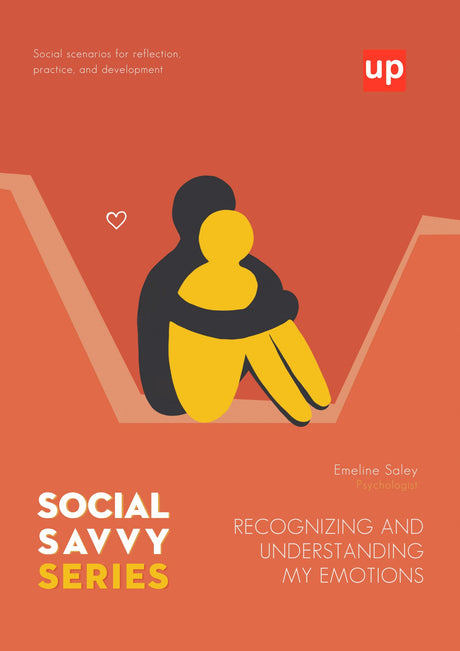Introduction
Children often experience a variety of physical discomforts, from recurrent tummy aches to frequent headaches. While these symptoms are common, they can sometimes be indicative of underlying psychological factors affecting their health. This article aims to shed light on the field of psychosomatics in children by exploring the complex connection between mind and body and how this manifests in various physical complaints.
 Psychosomatics in children: An overview
Psychosomatics in children: An overview
Psychosomatic disorders, also known as somatoform disorders, refer to medical conditions that have a significant psychological component. These disorders often manifest as physical symptoms without an identifiable organic cause.
In children, psychosomatic disorders can be particularly prevalent due to the complex interplay of emotions, stress, and their developing cognitive abilities (Caldwell, Greeson, & Karraker, 2020).
The impact of psychosomatic symptoms on a child's health can be significant, affecting their daily functioning and overall well-being.
Common psychosomatic symptoms in children
Several common physical complaints in children have been associated with a psychosomatic origin:
Abdominal pains and digestive problems: Persistent abdominal pain, bloating, and changes in bowel habits may be associated with unresolved emotional stress and anxiety (Campo, 2016).
Headaches and migraines: Frequent headaches in children have been linked to emotional distress, such as anxiety and depression (Szperka & Ali, 2014).
Persistent fatigue and sleep disturbances: Experiencing chronic fatigue or sleep disorders could be a manifestation of underlying psychological distress (Meltzer & Mindell, 2006).
Skin conditions and allergies: Conditions such as eczema or urticaria may be exacerbated by emotional stress, as the skin is sensitive to psychological factors (Papadopoulos et al., 2017).

Understanding of psychological stimuli
Psychological factors, particularly stress and anxiety, play a central role in the development and exacerbation of psychosomatic symptoms in children.
Children often lack well-developed coping mechanisms, resulting in the expression of emotional distress through physical symptoms (Campo & Fritsch, 2014).
In addition, family dynamics, school-related pressures, and adverse life events can contribute to the manifestation of psychosomatic symptoms in vulnerable children (Ali et al., 2019).
Case studies: real-life examples
Child A: Anna, a 10-year-old, began complaining of frequent stomach pains and missed several days of school. After an assessment, it was determined that Anna was experiencing school-related anxiety due to bullying. With counselling and support, Anna's physical complaints gradually subsided as her emotional wellbeing improved.
Child B: Jake, a 7-year-old, experienced frequent headaches. Further assessment revealed ongoing parental conflict in the home. After family counseling and open communication, Jake's headaches were significantly reduced.
Child C: Emily, age 12, developed eczema every time an exam approached. Through counseling, she learned effective stress management techniques that led to improved emotional health and reduced eczema flare-ups.

Recognition of psychosomatic symptoms in children
Recognising psychosomatic symptoms in children can be challenging as they may not have the language to fully express their emotional distress. However, keen observation of changes in behaviour, sleep patterns and school performance can provide valuable information. Encouraging open communication and active listening can facilitate understanding and early intervention (Kearney, 2008).
Coping strategies for parents and children
Parents and caregivers can play a key role in supporting children's emotional well-being and mitigating psychosomatic symptoms. Creating a supportive and nurturing environment, promoting emotional expression and introducing mindfulness and relaxation techniques can enhance resilience and overall wellbeing (Greeson, 2020).
In cases of persistent or severe symptoms, seeking professional help from child psychologists or child psychiatrists can be beneficial (Allen et al., 2019).
Education of schools and healthcare providers
Raising awareness about psychosomatics in children is essential to improve their overall health care. Educating teachers, school staff, and healthcare providers about the relationship between emotional health and physical symptoms can lead to more comprehensive care for children experiencing psychosomatic symptoms (Campo et al., 2018).
Breaking the stigma: De-stigmatizing children's emotional health
De-stigmatising conversations about mental and emotional health is crucial to supporting children who experience psychosomatic symptoms. By promoting open dialogues about feelings and physical complaints, we can empower children to seek help without fear of judgment (Perkins et al., 2019).
Conclusion
Psychosomatic symptoms in children can be difficult to identify, but require careful attention from parents, caregivers and health professionals. Understanding the relationship between emotional wellbeing and physical distress is vital to providing holistic care for children. By addressing emotional distress, offering coping strategies and breaking the stigma surrounding mental health, we can promote a healthier future for our children.
Original content from the Upbility writing team. Reproduction of this article, in whole or in part, without credit to the publisher is prohibited.
You can also read:
- The Link Between ADHD and Exercise
- Improve Your Child's Self-Esteem With Extracurricular Activities
- ADHD and Lying: The Reasons Why Kids With ADHD Are Prone to Lying
- Back to School: Making it Easier for Students With Learning Disabilities
- ADHD and Substance Abuse in Teenagers A Research
- 5 Tips For A Happy Summer For Kids With ADHD
- The Impacts Of Distance Learning A Review
Suggested Books on ADHD:












